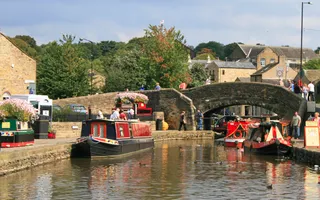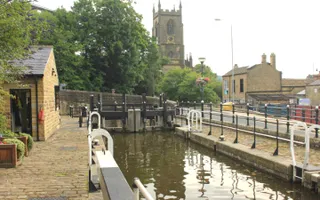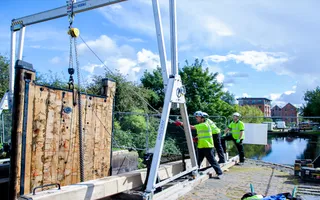From the Bridgewater and Leeds & Liverpool Canals along the Aire & Calder and Calder & Hebble Navigations and returning via the Rochdale Canal, the Two Roses Ring is an compelling mix of fascinating history, impressive engineering and spectacular countryside. It is also one of the few rings suitable for wider beamed boats.
The Castlefield area of Manchester was populated by Romans as early as AD79. Supplies were brought via the River Irwell, utilised hundreds of years later in the construction of the Manchester Ship Canal. The modern Outdoor Events Arena is Romanesque and its canvas covers dangle over the canal arms. Nearby Liverpool Road Railway Station, built in 1830, is the oldest in the world and so Castlefield can claim to be at the forefront of not only the canal revolution but the ensuing railway one also.
The Bridgewater Canal meets the Leigh Branch of the Leeds & Liverpool Canal at Leigh. The high embankments are indicative of subsidence. At Wigan the Leeds & Liverpool rises through 21 locks and runs flat for several miles to Johnson’s Hillock Locks. The derelict Walton Summit Branch was originally the line of the Lancaster Canal.
Transformation at Leeds
The meandering route to Skipton features sumptuous scenery; the lock keeper assists passage through Bingley Five Rise Locks. The waterfront at Leeds has undergone a transformation with disused warehouses converted to shops and restaurants. The route continues along the Aire & Calder Navigation, a commercial waterway carrying large vessels. Stanley Ferry Aqueduct crosses the River Calder in a cast iron trough.
From Wakefield the Calder & Hebble continues to Sowerby Bridge. Flood locks and defences along the route minimise the effects of varying water levels. Short branches and old basins make for interesting diversions.








